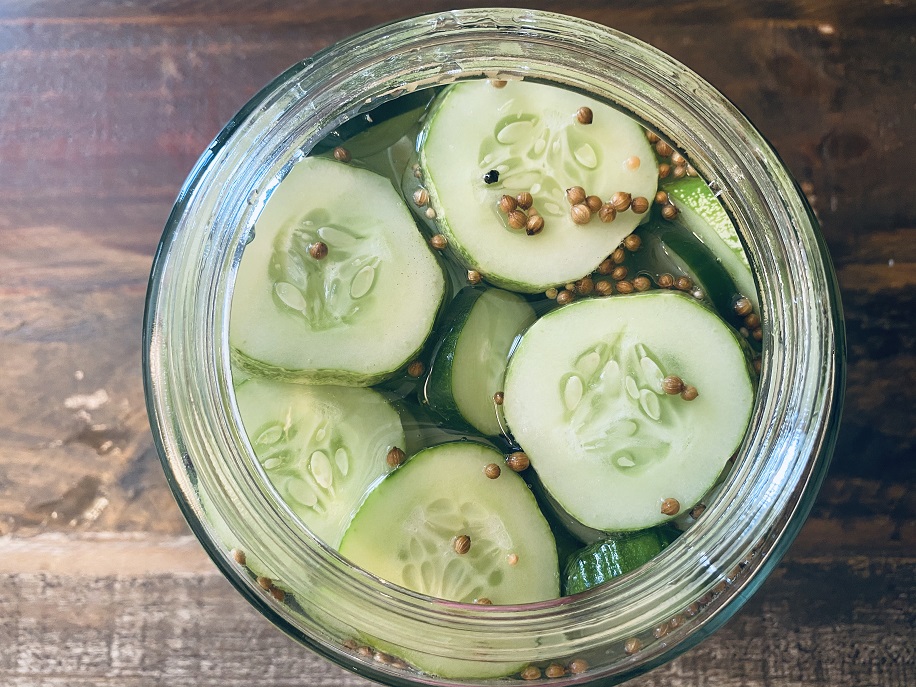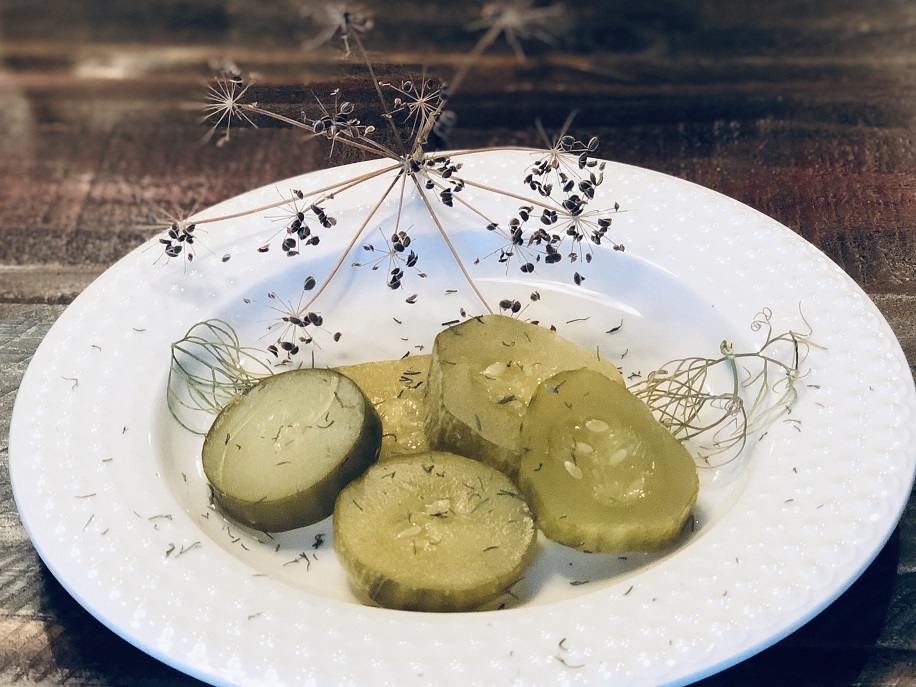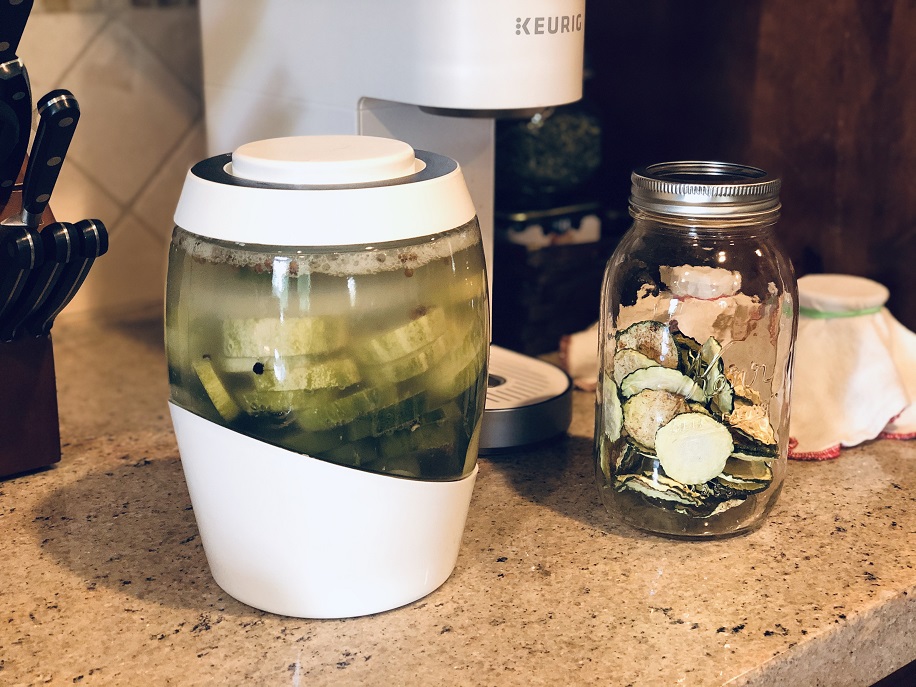Best Fermented Dill Pickles – Simple Summer Garden Recipe

Are you looking to preserve your abundance of garden cucumbers? Are you looking to make a healthy homemade dill pickle that contains many health benefits? You are at the right place. The Best Fermented Dill Pickles are a family favorite in our home. They are simple to make and taste delicious!
Every day we live and every meal we eat we influence the great microbial organ inside us – for better or worse.
Giulia Enders
Table of Contents
My Fermented Foods Journey
I discovered how easy it was to make fermented vegetables quite a few years ago. I learned of their health benefits and knew I wanted to give it a try.
The first fermented vegetable recipe I made was homemade sauerkraut. I never was a fan of sauerkraut growing up and was skeptical about this one. However, the only sauerkraut I had I tasted was the store-bought kind you put on bratwurst.
Well, long story short, I was very pleasantly surprised. I loved the unique taste and fermented flavor and I never turned back. Thus began my joy of fermenting foods.

Fermented Dill Pickle Benefits (1)
- Supports digestive health by increasing the good bacteria in the gut microbiome
- Boosts the immune system
- Supports brain health
- Fermented foods are easier to digest
- Helps release vitamins and minerals from the vegetables thus allowing our bodies to better absorb and use them

Best Fermented Dill Pickles Recipe Tips
- This recipe calls for a 2-quart jar or you can split it into two 1-quart jars. We used the Mortier Pilon Jar for this recipe. You can see it in the photo above. We love this jar. It comes with a ceramic fermentation weight, a wax pencil for labeling, and an instruction/recipe book. 2-quart and 1-quart wide mouth mason jars work great as well.
- Use good quality organic cucumbers and ingredients.
- Allow the cucumbers to ferment at room temperature (approx 70 degrees) out of direct sunlight for 3-5 days or to taste.
- Use a fermentation weight, heavy rocks in a ziplock bag, or cabbage leaves layered on top to keep veggies submerged in the brine.
- Cover the jar with a cloth and rubber band or a loose-fitting lid such as the one that came with my fermentation crock. *See video and pictures.
- It is a good idea to label your jars with the date you processed the pickles.
- Check the top of the jar every day or two to make sure all of the cucumbers are still submerged in the brine.
- Taste test your pickles and refrigerate them with a tight-fitting mason jar lid after the pickles are fermented to your liking.
- You will notice the brine starts to look cloudy after about 2 days. This is totally normal and part of the fermentation process.
- If you notice a thin layer of film or surface mold, scrape and remove that layer. The cucumbers/pickles should be fine so long as they are fully submerged in the brine.
- Fermented vegetables can last 6 months up to 1 year if refrigerated. (2)

Best Fermented Dill Pickles – Simple Summer Garden Recipe
Ingredients
Equipment
Method
- Slice the cucumbers ¼ inch thick.
- Add the dill to the bottom of the fermentation jar or 2 quart mason jar.
- Fill the jar half way with the cucumber slices.
- Add the garlic cloves.
- Fill up the jar with the remaining cucumber slices. Leaving ½ inch headspace at the top.
- Add the spices: mustard seeds, coriander seeds, and peppercorns.
- Using a large measuring cup or bowl, add 4 cups of filtered water.
- Add 2 tablespoons of salt to the water and mix well with a metal spoon to create the brine.
- When the salt is dissolved, pour the brine into the jar leaving about ½ inch of space at the top of the jar.
- Add the fermenting weight or alternative. Be sure all of the cucumbers are submerged under the brine. If needed, add a little more water or brine.
- Cover the jar with the light cloth and secure it with the rubberband.
- Label your jar with the processing date.
- Allow the cucumbers to ferment at room temperature (approx 70 degrees) for about 3-5 days or to taste.
- When fermenting is complete, cap the jar with the proper tight fitting mason jar lid and refrigerate.
- Enjoy!
Notes
Fermentation has certainly made me feel more connected to unseen worlds. The practice of fermentation is based on trust in these invisible life forces.
Sandor Katz
For more simple summer garden recipes, visit our recipes page here.


Love, love, love fermented pickles.
I agree 🙂